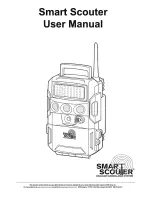
AXIS P32 Dome Camera Series
The device interface
•
Domain
: If available, enter the public domain name. It will be shown as part of the SIP address when calling other
accounts.
•
Password
: Enter the password associated with the SIP account for authenticating against the SIP server.
•
Authentication ID
: Enter the authentication ID used for authenticating against the SIP server. If it is the same as the
user ID, you don’t need to enter the authentication ID.
•
Caller ID
: The name which is presented to the recipient of calls from the device.
•
Registrar
: Enter the IP address for the registrar.
•
Transport mode
: Select the SIP transport mode for the account: UPD, TCP, or TLS. When you select TLS, you get the
option to use media encryption.
•
Media encryption
(only with transport mode TLS): Select the type of encryption for media (audio and video) in SIP calls.
•
Certificate
(only with transport mode TLS): Select a certificate.
•
Verify server certificate
(only with transport mode TLS): Check to verify the server certificate.
•
Secondary SIP server
: Turn on if you want the device to try to register on a secondary SIP server if registration
on the primary SIP server fails.
•
Answer automatically
: Select to automatically answer an incoming call.
•
SIP secure
: Select to use Secure Session Initiation Protocol (SIPS). SIPS uses the TLS transport mode to encrypt traffic.
•
Proxies
-
Proxy
: Click to add a proxy.
-
Prioritize
: If you have added two or more proxies, click to prioritize them.
-
Server address
: Enter the IP address of the SIP proxy server.
-
Username
: If required, enter the username for the SIP proxy server.
-
Password
: If required, enter the password for the SIP proxy server.
•
Video
-
View area
: Select the view area to use for video calls. If you select none, the native view is used.
-
Resolution
: Select the resolution to use for video calls. The resolution affects the required bandwidth.
-
Frame rate
: Select the number of frames per second for video calls. The frame rate affects the required
bandwidth.
•
DTMF
-
Use RTP (RFC2833)
: Select to allow dual-tone multifrequency (DTMF) signaling, other tone signals and
telephony events in RTP packets.
-
Use SIP INFO (RFC2976)
: Select to include the INFO method to the SIP protocol. The INFO method adds
optional application layer information, generally related to the session.
-
DTMF sequence
: Click to add an action rule triggered by touch-tone. You must activate the action
rule in the
Events
tab.
-
Sequence
: Enter the characters to trigger the action rule. Allowed characters: 0–9, A-D, #, and *.
-
Description
: Enter a description of the action to be triggered.
SIP test call
SIP account
: Select which account to make the test call from.
SIP address
: Enter a SIP address and click
to make a test call and verify that the account works.
Storage
Network storage
39
















































